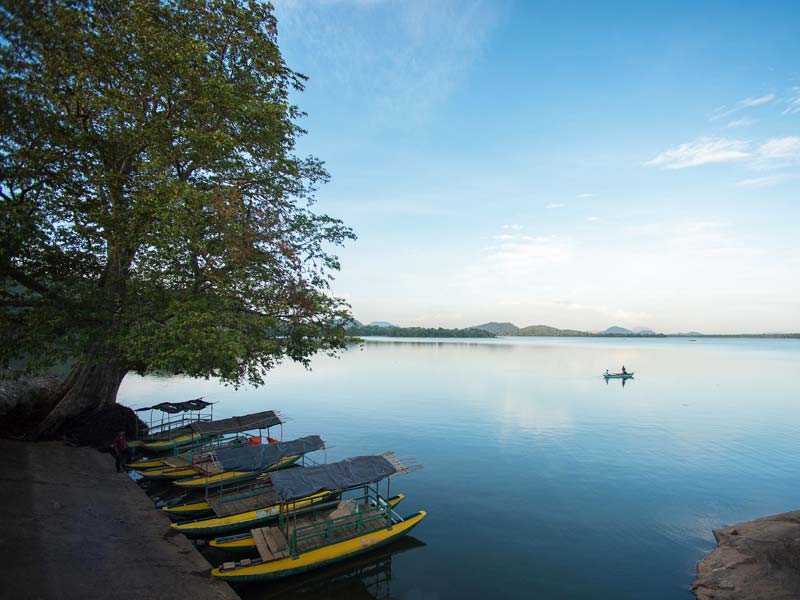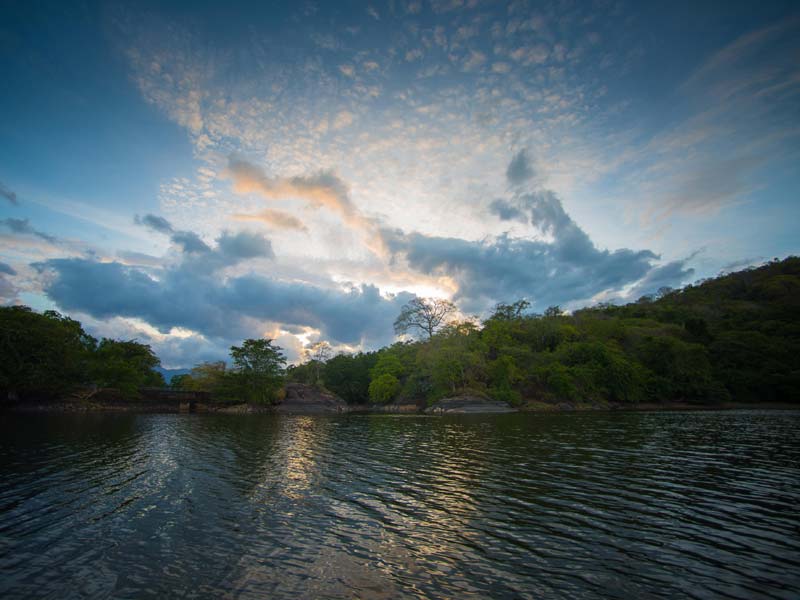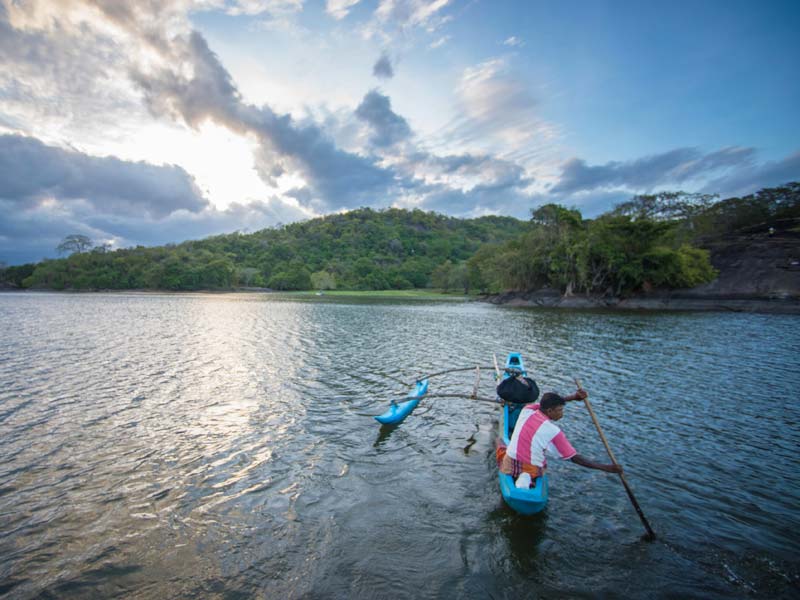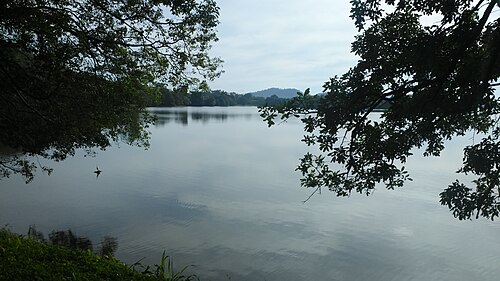Sorabora Wewa is indeed an ancient reservoir located in Mahiyangana, in the Badulla District of Sri Lanka. It is believed to have been built during the reign of King Dutugemunu (161 BC – 137 BC), which aligns with the historical narrative that it was constructed by a giant named Bulatha. In ancient times, it was referred to as the 'Sea of Bintenna'.
This reservoir served a crucial role in supporting agriculture and irrigation in the region, showcasing the advanced engineering skills of ancient Sri Lankan civilizations. The reservoir's construction, with its massive embankments and sluice gates, demonstrates the sophistication of hydraulic engineering techniques employed during that era.
Sorabora Wewa was built by constructing a 485-meter embankment across the Diyawanna Oya, effectively creating the reservoir. This embankment served to contain the water within the designated area, allowing for the storage and regulation of water for irrigation purposes. Unlike some other ancient reservoirs in Sri Lanka that utilize Bisokotuwa structures to regulate water pressure and protect embankments, Sorabora Wewa does not employ such a mechanism. Instead, it relies on alternative methods to manage water flow and safeguard the embankment.
The sluice gate, known as Sorowwa, is positioned strategically away from the embankment of Sorabora Wewa. This placement helps to mitigate the risk of erosion and damage to the embankment while ensuring effective regulation of water flow. The unique aspect of Sorabora Wewa is the use of natural rock formations to construct the sluice gate. By incorporating the massive natural rocks surrounding the tank, engineers were able to create a durable and effective sluice gate structure. Its construction demonstrates the advanced engineering skills of ancient Sri Lankan civilizations.
Sorabora Wewa is mentioned in ancient chronicles and literature, highlighting its importance in Sri Lanka's history. It is considered a cultural heritage site and attracts tourists interested in exploring the country's ancient irrigation systems and infrastructure. Today, Sorabora Wewa continues to play a role in agriculture in the Mahiyangana area. Efforts are made to conserve and maintain the reservoir, recognizing its historical and cultural significance.
Sorabora Wewa stands out not only for its historical significance but also for its innovative engineering solutions, showcasing the ingenuity of ancient Sri Lankan civilizations in water management and irrigation infrastructure.
The reservoir and its surroundings offer scenic views and opportunities for tourism and exploration. Visitors can appreciate the ancient engineering marvels and learn about the cultural significance of Sorabora Wewa.



